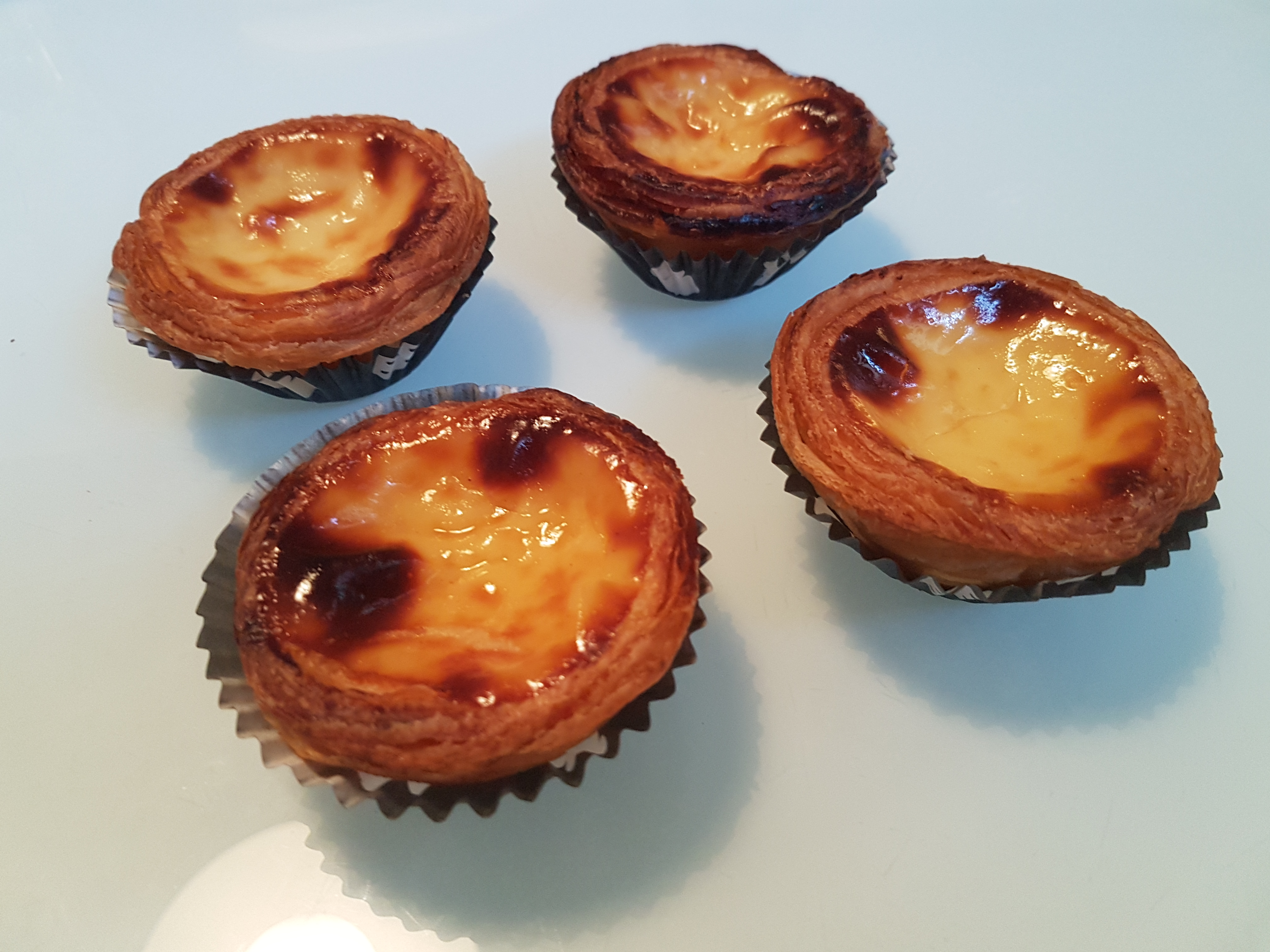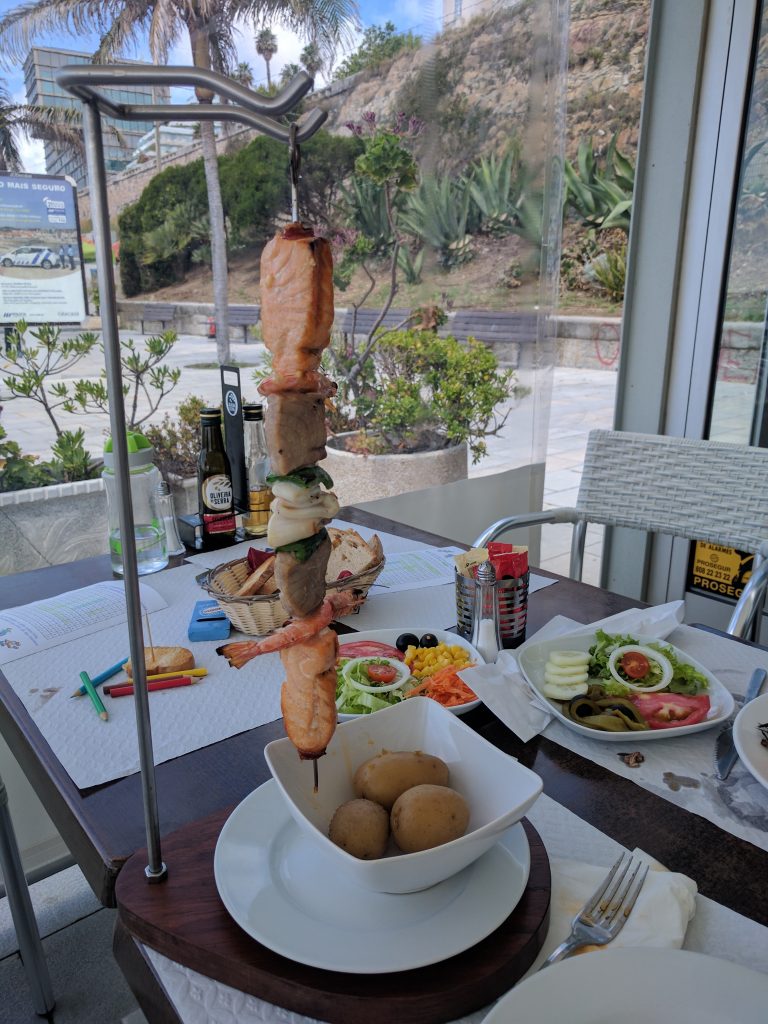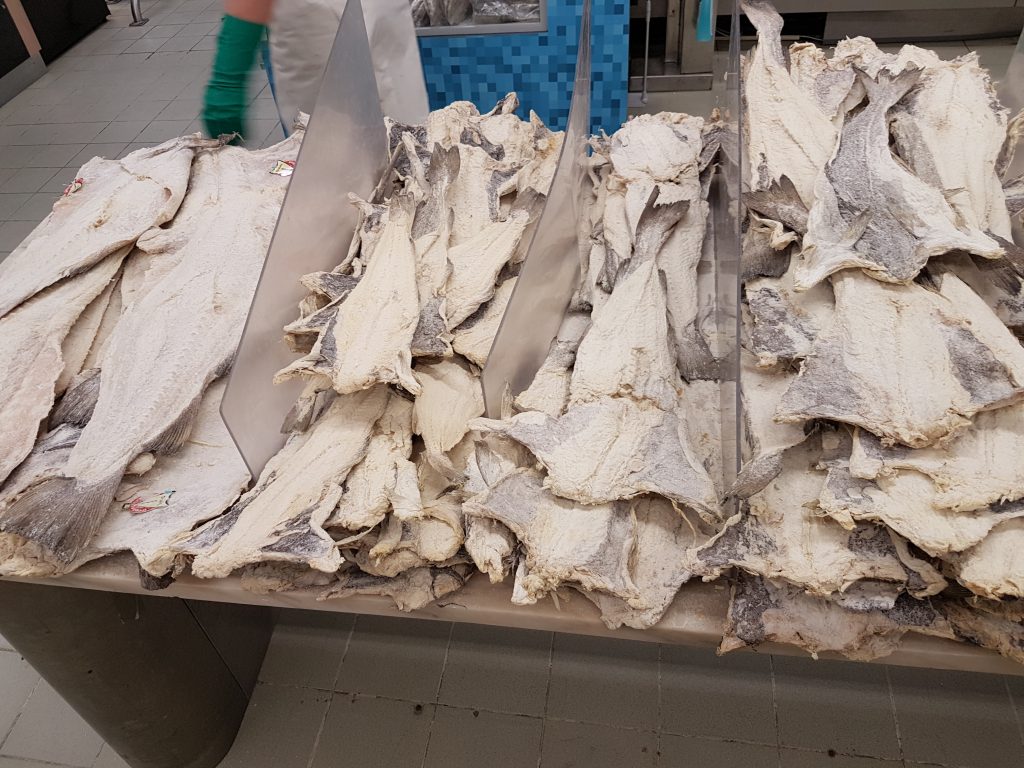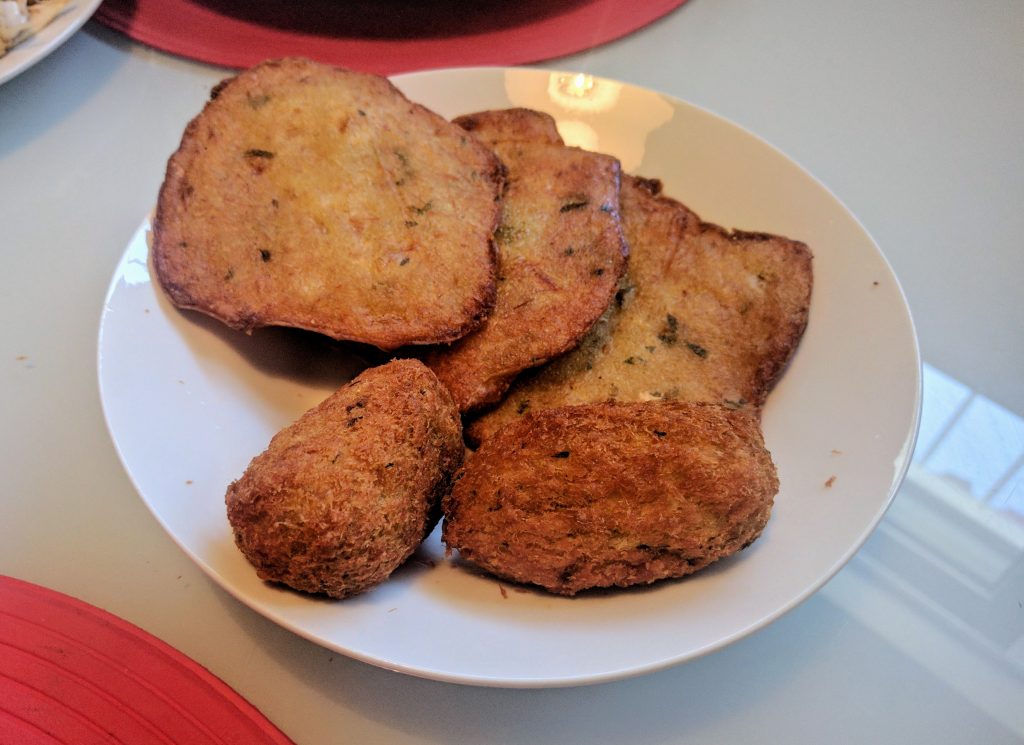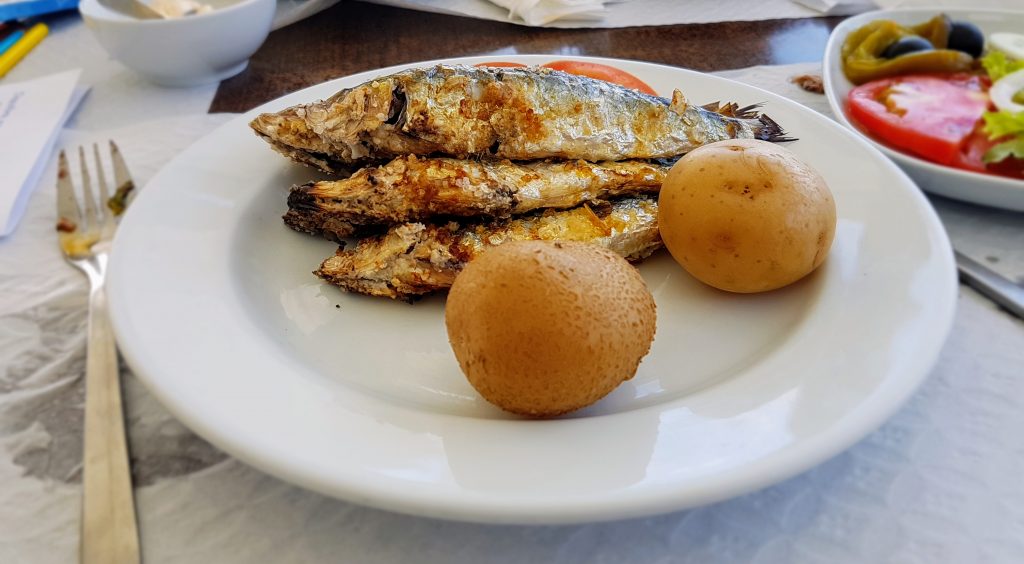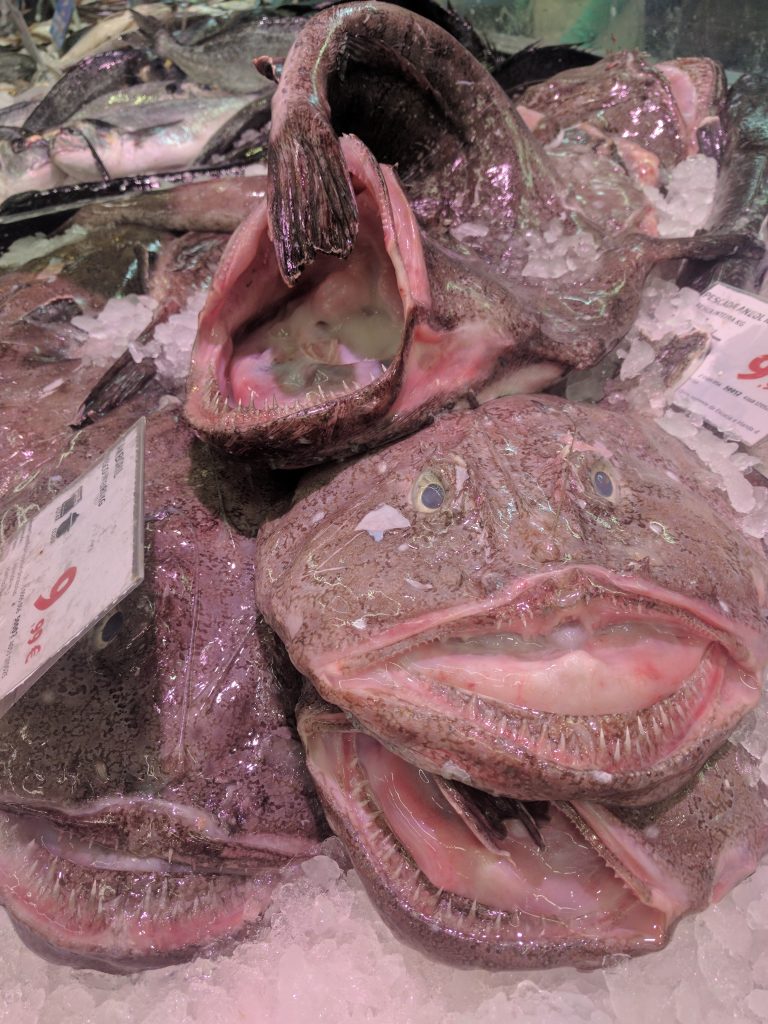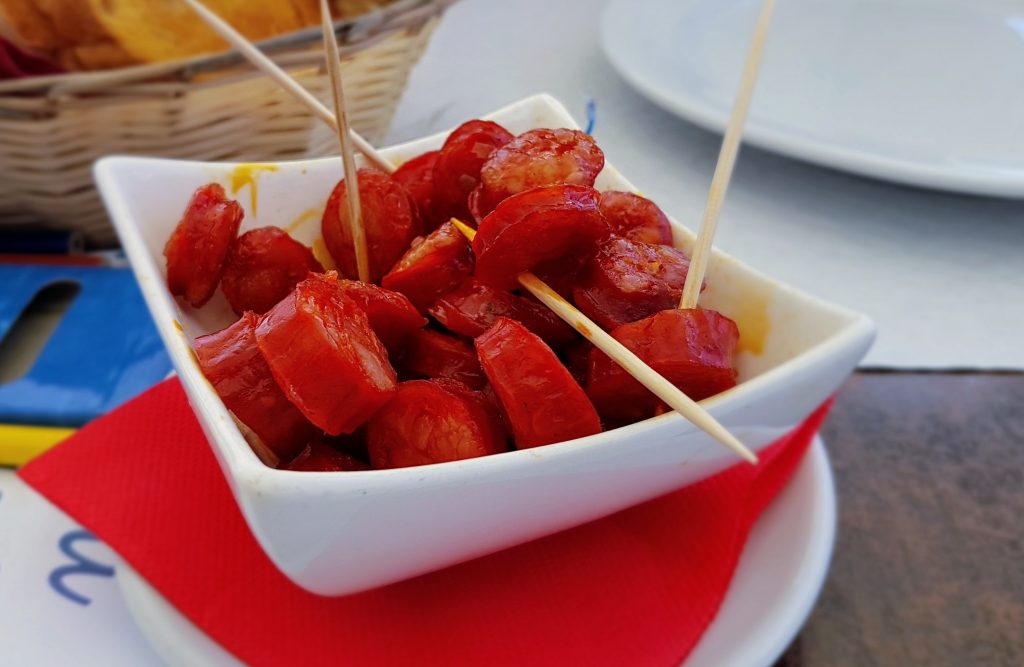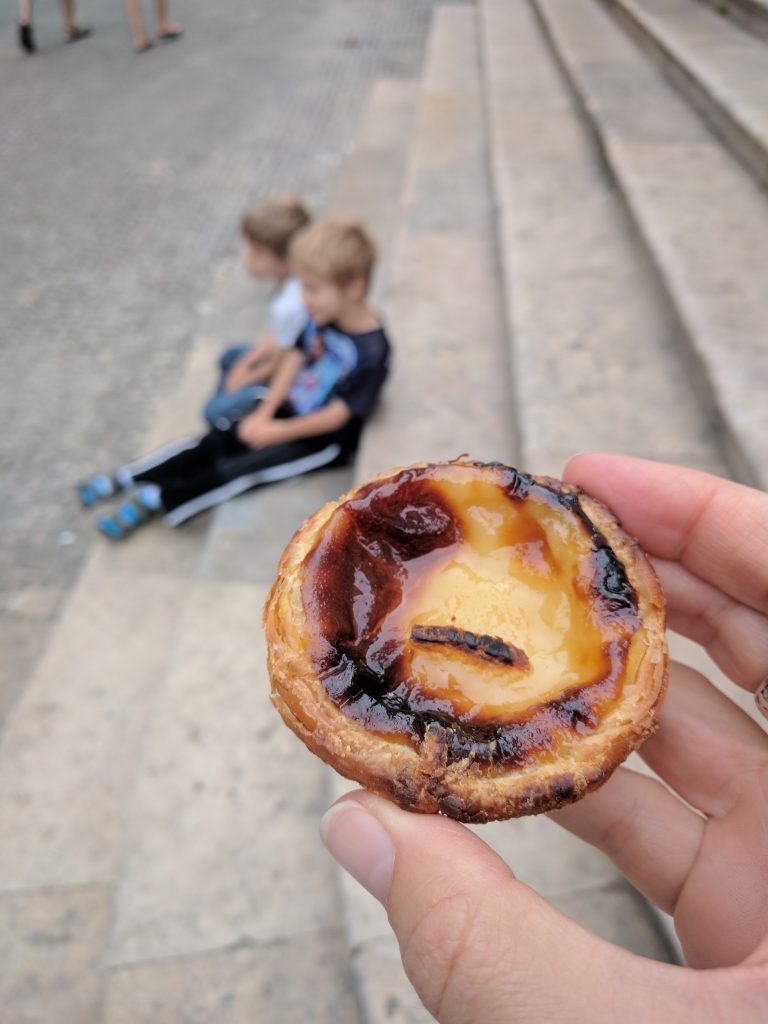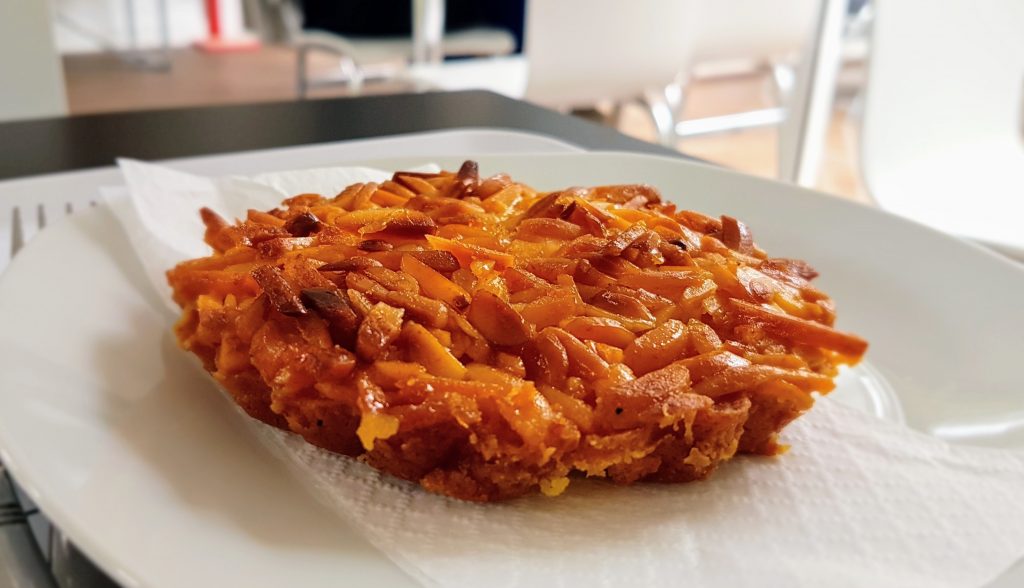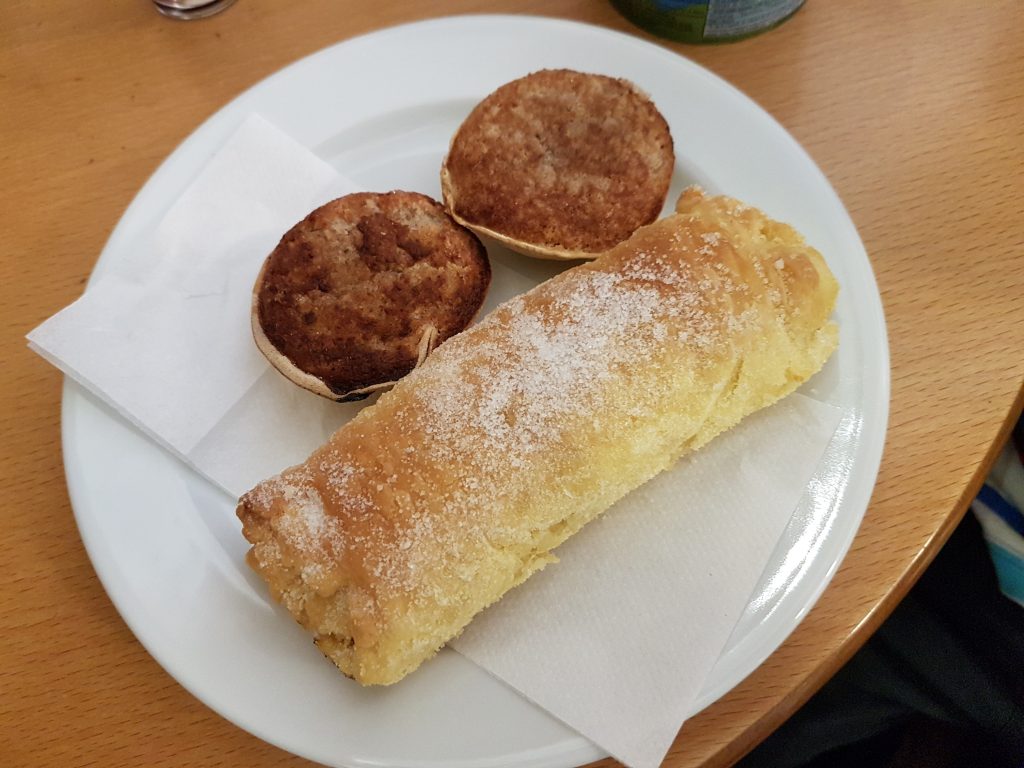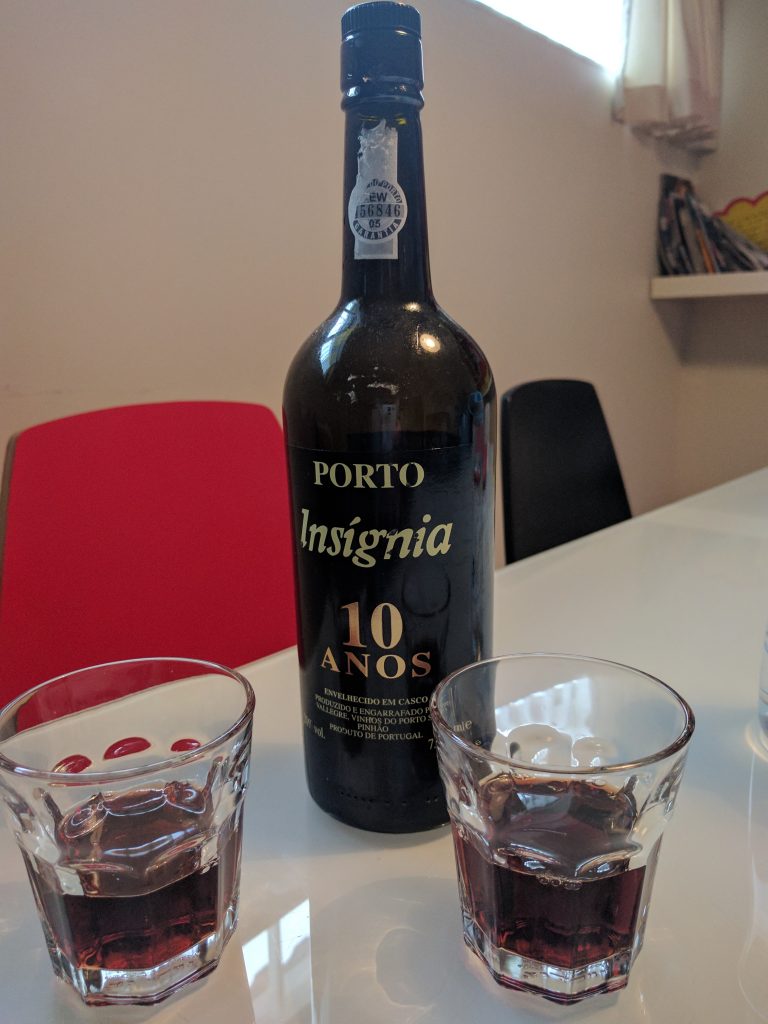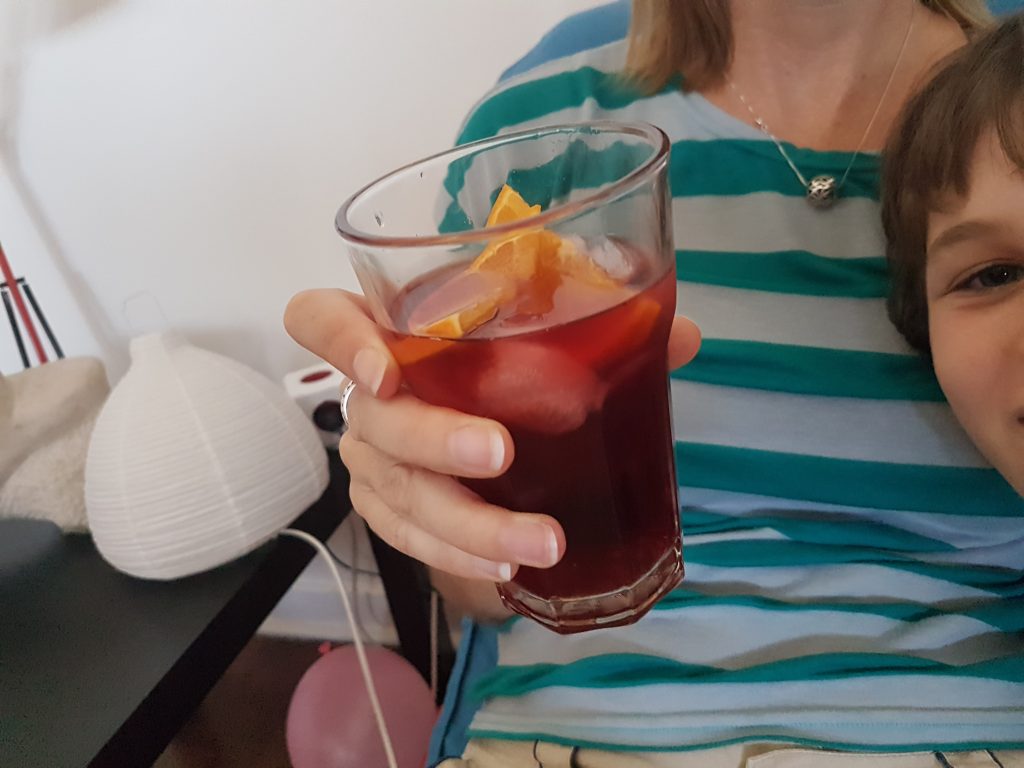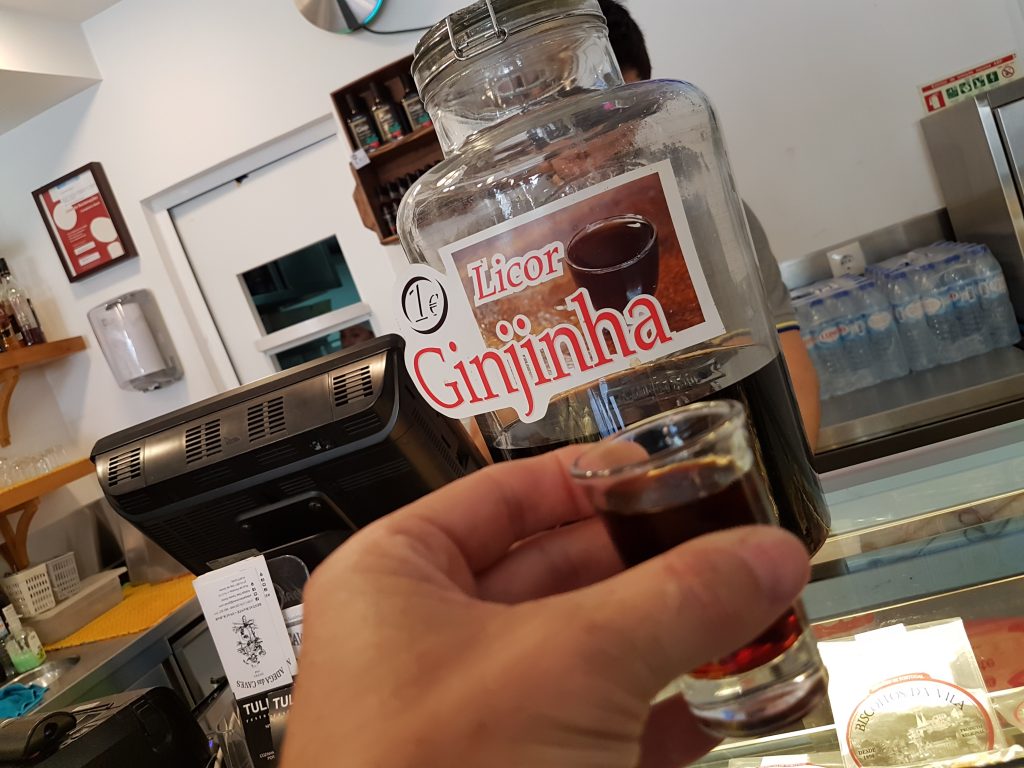Before coming to Portugal, our knowledge of Portuguese cuisine was solely based on visiting Nando’s a few times. What little did we know.
During our stay in Portugal, we expected to find Portuguese roast chicken in abundance, but alas the roast chicken we found was only lightly spiced and not chilli hot at all. It turns out that Nando’s the international Portuguese takeaway chicken is a South African company based on a Portuguese style, although there is none here in Portugal!
What they do have in abundance is seafood! There is a wide range of seafood available due to the extensive coastline, from fish to octopus, sardines and different types of prawns.
Salted cod (Bacalhau) is a very popular ingredient here. It is sold widely in all supermarkets, and makes for a very smelly shopping excursion. I never got a chance to cook with any, mostly because I wouldn’t know what to do with it, not because I didn’t want to.
However we did purchase some cod patties made with potato, and cod pancakes, which were flat and round. Both were really tasty, which is no surprise for something salty and deep-fried.
All these cod, and they don’t even find it in the waters here. Its popularity is due to its use on long sea journeys, becoming a staple of the Portuguese Navy. Everyone started eating it, and hasn’t stopped. The fish that is commonly found in the ocean here is sardines, which is also common on menus.
There was one very unusual fish in the supermarket called a Tamboril, with a huge mouth and lots of spikey teeth, I was definitely not game enough to buy and cook that!
Linguiça is a Portuguese roasted sausage, very similar to the Spanish chorizo, salty, slightly spiced, and eaten sliced and pan-fried, delicious!
Portuguese egg tarts (pastéis de nata) are famous around the world. We had heard of them before we even arrived. Everyone seems to love them, and they’re so popular they are sold by the half-dozen, and rightly so! This small round tart is made from crispy puff pastry filled with sweet egg custard cream and baked to golden perfection. They are so good I wanted to eat one every day.
Almond tart is a very popular cafe item, with a pastry base and caramelised almond on top. It was always tempting and delicious.
There seemed to be a lot of dried figs stuffed with almonds in a variety of different ways, making interesting patterns. I found these mostly in the southern Algarve region, apparently, it’s their specialty.
There were a couple of specialty dishes from the town of Sintra: two sweet pastry desserts called travesseiros and queijadas. We sampled both for afternoon tea on our day out in Sintra, along with some gelados (icecream)!
The queijadas are a small round tart made with ground almonds, lots of cinnamon and nuts, and were very tasty. The long sausage roll-looking travesseiros is rolled puff pastry filled with almond cream, and dusted with icing sugar. These were not bad, though I did prefer the queijadas (others must agree, as they were sold in packs of 5!)
Porto is a town north of Lisbon, where they created the drink of Port! So of course we had to give the local drop a try!
Sangria is also a common drink, red or white claiming to be ‘Portuguese style’. I’m not sure I could describe the difference as we haven’t been to Spain yet to compare. It tasted very good though!
Ginjinha is a Portuguese liqueur made from the ginjha berry (sour cherry), which is sold by the shot in a chocolate cup, which would have been delicious, however, we tried ours straight up in a glass, or you can buy a whole bottle if you really like it. It was rather yummy, but I was pretty sure I wouldn’t be able to polish off a whole bottle in a few days!
We learned a lot about Portuguese cuisine in our week here. The food is not just a variation of Spanish cuisine, it has its own history and style, and much like their language, they keep a very clear distinction from each other. We have enjoyed sampling the local dishes, and look forward to comparing them to what we find in Spain in the coming week.

